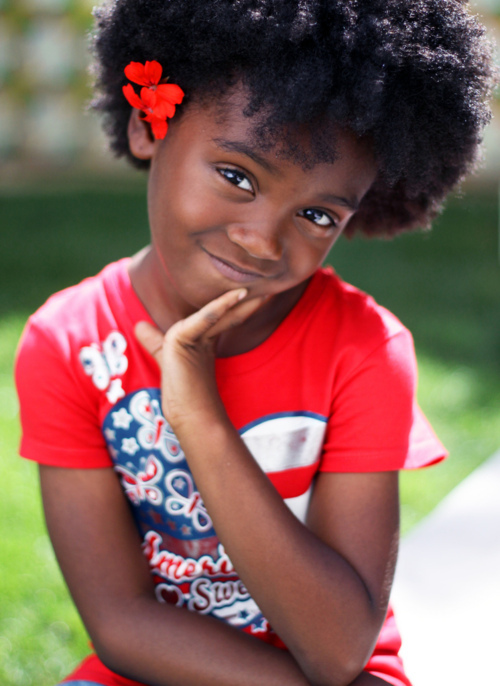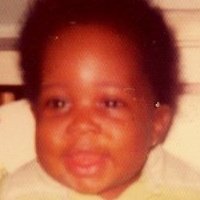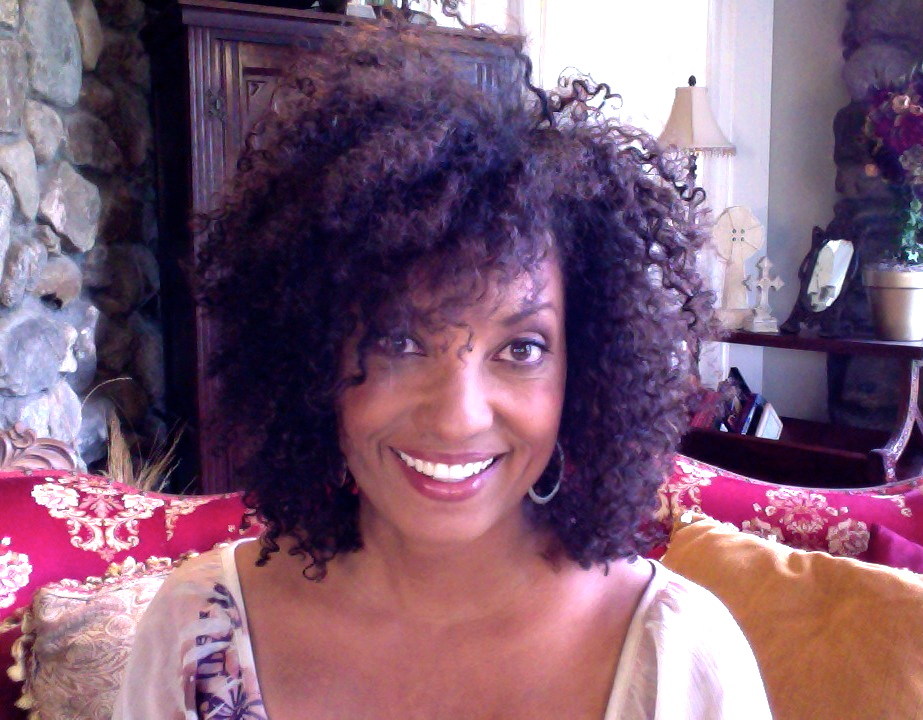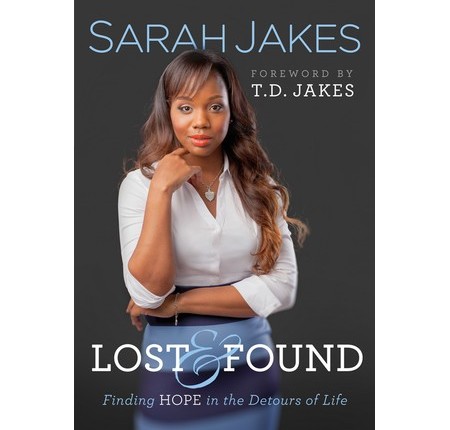The die was probably cast from the moment I was born. According to Mama, one of the first things she noticed, after counting the fingers and toes of course, was my hair. “You had the thickest, glossiest curls I’d ever seen. I would just brush it,
braid it, put you in little dresses and take picture after picture. Your Grandma Margaret said you looked just like a baby doll.”
As I grew older and more children came along—particularly a sister with just as much hair as me—my mother had less time for grooming and decided to relax my hair, a process that deflated its density and straightened the copious curls to make it more “manageable.”
Wearing the straight look may work for some, but as soon as I reached adulthood, I cut off the chemically-treated tresses to wear my hair in styles that work
with, rather than against, the natural coiled texture. It’s a practice I now apply to grooming Nia’s and Layla’s heads, the new generation of girls who also came into the world with bountiful beaucoup of hair.
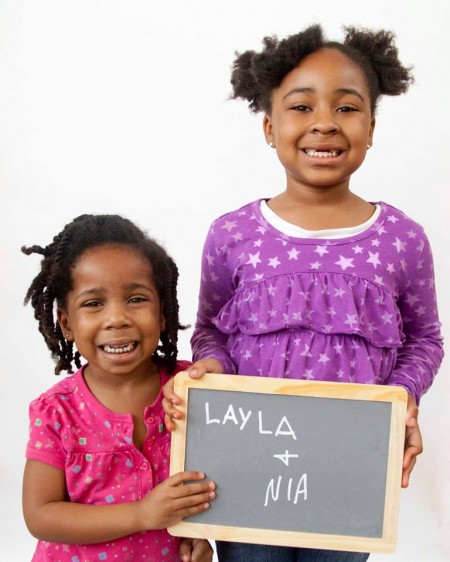 Like other young children, my daughters are super-curious and
Like other young children, my daughters are super-curious and
ask numerous questions about the uniqueness of African- American hair. They first started inquiring, “Why isn’t my hair ‘flat?” and “Why does my hair ‘shrink’?” and “How does my hair stay twisted up/braided up without rubber bands?”
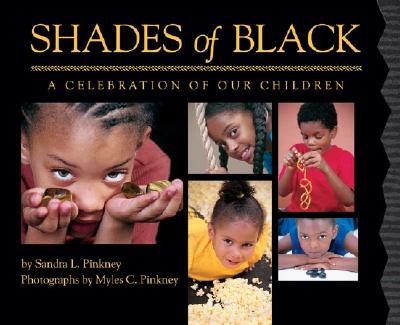 So we read together from books like Shades of Black, How Are we The Same and Different? and I Love My Hair. From those pages, they saw for themselves that everyone is different and that looking exactly like someone else isn’t required for them, or
So we read together from books like Shades of Black, How Are we The Same and Different? and I Love My Hair. From those pages, they saw for themselves that everyone is different and that looking exactly like someone else isn’t required for them, or
others, to appreciate what they already have.
What I hope I never have to prepare for, however, is teaching that elementary truth to adults who ought to know better, like the officials at several schools that have recently garnered national headlines for attempting to outlaw African-American
hairstyles or ban the students wearing them.
In language that smacks more of the pre-Civil Rights era than the 21st century, some elementary school campuses amended their dress codes to disproportionately penalize children with Africanized, kinkier hair. Last June, Ohio’s Lorain Horizon Science Academy earned outrage after sending home letters that read, “Afro-puffs and small twisted braids, with or without
rubber bands, are NOT permitted.” In September, a 7-year-old girl was sent home from Oklahoma’s Deborah Brown Community School after a new policy declared her dreadlocks”distracting, faddish” and “unacceptable.” And just weeks ago, after a black student complained to teachers at Florida’s Faith Christian Academy that students were teasing her about her thick mane, school administrators decided that she was the problem and gave an ultimatum: cut the afro or be expelled.
Except for the OK case (the girl’s parents wisely opted to remove her from the campus altogether), the prejudicial policies were rescinded after going viral in social media, but the troubling questions still remain: why, in a so-called
‘melting pot’ of a society, is African-American hair still considered by so many to be ‘unacceptable’? What made these officials believe that singling out the hairstyles worn nearly exclusively by black children was going to be a tolerable practice?
Beverly Bond, founder of the self-esteem-building organization Black Girls Rock, recently told the Associated Press that the controversial dress code policies are regressive and demeaning. “The public banning of our hair or anything about us that looks like we look, it feels like it’s such a step backward. Our girls are always getting messages…that they are not good enough, that they don’t look pretty enough, that their skin isn’t light enough, that their hair isn’t long enough, that their hair isn’t blond enough.”
It’s been disheartening to witness institutions promote bigotry when they are supposed to foster diversity. If differences in hair follicles and cultural customs are enough to get children banned, let’s face it—there are few, if any, worthwhile lessons that those institutions are qualified to teach.

